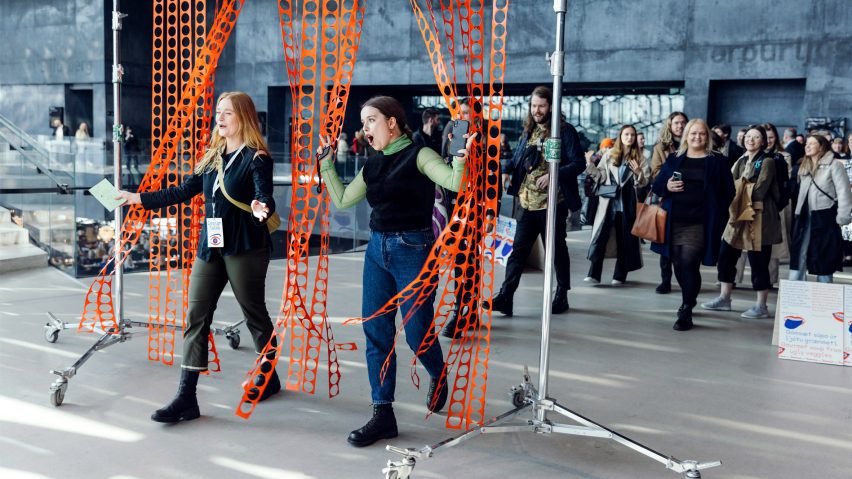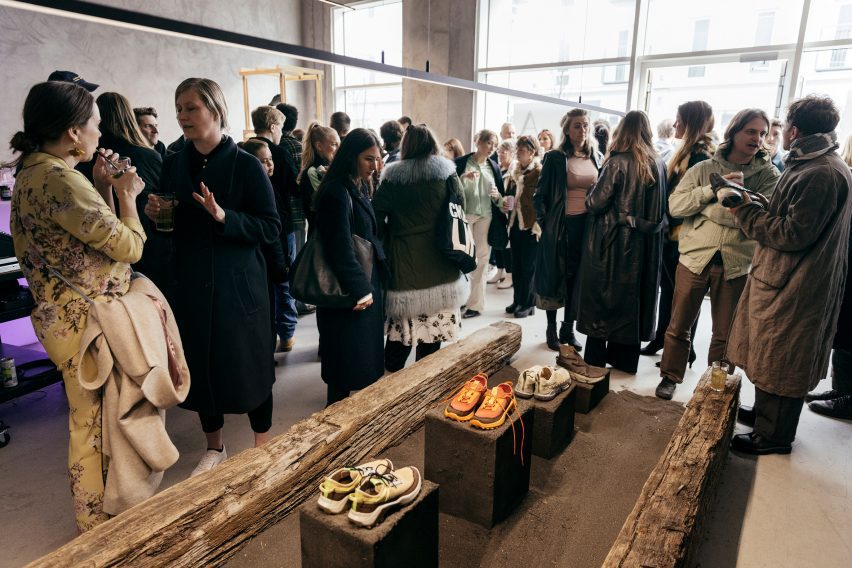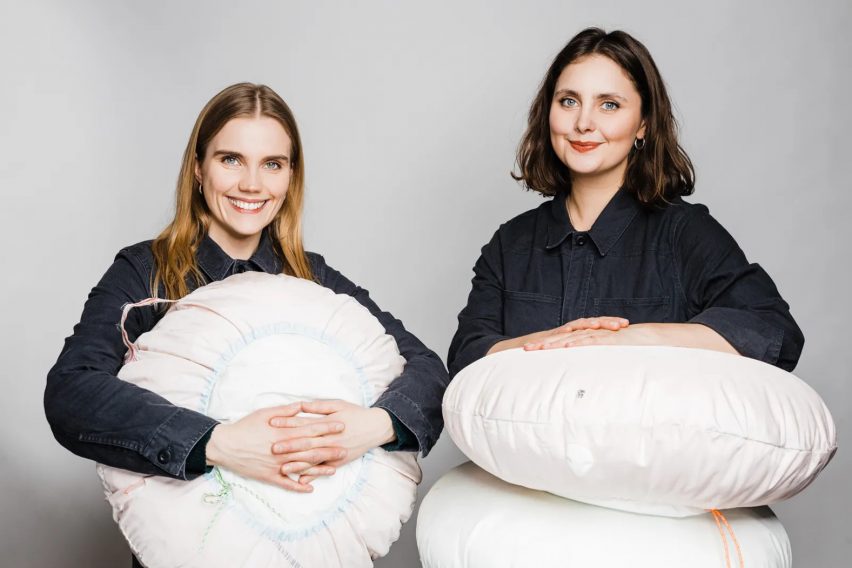
The country where design is dominated by women
Unlike in most parts of the world, Iceland's design scene is overwhelmingly female. Nat Barker explores what makes the tiny Nordic nation different.
This year, Iceland's annual design festival, DesignMarch, began just three days after Milan design week, which is still the biggest event in the industry calendar.
For anyone attending both, the stark contrast in the visibility of women was impossible to miss.
While women were once again pushed to the margins in Milan, in Reykjavík their work and presence dominated across the exhibitions.
In some ways, the prevalence of women in the design scene is reflective of Icelandic society as a whole.
The country has topped the World Economic Forum's gender equality rankings for the last 14 years in a row.
"Women in Iceland are quite experimental"
DesignMarch managing director Halla Helgadóttir argues that Iceland's tradition of strong female leaders and creative voices has encouraged designers.
"We have very strong women role models in Iceland, and have had for a long time," she told Dezeen.
"Björk is the most famous of some strong creative role models that broke through internationally, which has had a huge influence on the belief in Iceland that we can go further with what we do," she added.
"So women in Iceland are quite experimental and innovative."
The youthfulness of Iceland's design field has also been significant, she suggests.
In the late 1980s, a young Tinna Gunnarsdóttir travelled from her native Iceland to study 3D design in the UK.

Although she didn't really consider it at the time, Gunnarsdóttir was pioneering her country's design scene.
"When I came back to Iceland, I literally didn't have anybody to talk to about my field because the field didn't exist in Iceland," she recalled. "I came back to this cold little island and I was an island on an island."
Gunnarsdóttir has run her product-design studio for 30 years and has been exhibiting solo in Milan and beyond since the mid-1990s.
Design in Iceland really started to take off around the turn of the millennium thanks to the establishment of the Iceland University of the Arts – where Gunnarsdóttir has educated many of the country's younger designers.
"I did notice a long time ago how many women were in design in Iceland," she told Dezeen.
Gunnarsdóttir studied in England with Sigríður Sigurjónsdóttir, who is now director of Iceland's Museum of Design and Applied Art. Like Helgadóttir at DesignMarch, she leads an all-female staff.
"We focus very little on role models of men"
Hrefna Sigurðardóttir, co-founder of waste-focused studio Flétta – one of Iceland's buzziest young design names – agrees that the newness of the scene is a factor.
"It's a rather young profession in Iceland, so we don't have a long heritage like many other countries have where you have role models that are often men that you have to live up to," she told Dezeen.
"And I think the freedom we have in Iceland is kind of amazing in that perspective – there's no rules on how it should be or how a designer looks. I think that has been great for us in Flétta."
Íris Indriðadóttir, one half of design and farming duo Erindrekar (pictured top), adds that this idea is engendered during design education in Iceland.
"It's very much about the materials, the conceptual side of it, and very little about genres of design or themes or history – as we don't have a lot of design history in Iceland," she said. "So we focus very little on role models of men."
It's not that Iceland is completely immune to sexism. Indriðadóttir remembers patronising interactions when purchasing materials as a graduate designer.
"But I feel today, if you know what you're talking about, the men in the hardware stores are looking at you as an equal," she told Dezeen. "I think it's a huge turn in the last five years."
However, Iceland's more well-established design-related disciplines – architecture and graphic design, which have been available as degrees for longer – are nowhere near as women-led as product design.
Flétta's Hrefna Sigurðardóttir also works as a consultant in the material innovation team at architecture firm Lendagar.
"It was super interesting to step into the architecture world, it is definitely more man-driven," she said. "It's a huge difference, I would say."
"It is always a struggle"
Here too things are changing, in the eyes of Alma Sigurðardóttir – an architecture historian and conservation specialist based at the National Museum of Iceland.
"There is definitely a shift," she said. "Most of my colleagues now are women, whereas our predecessors were predominantly older men."
She points out that while 58 per cent of Architects Association of Iceland members are men, 70 per cent of students in the Iceland University of the Arts architecture department are women. Globally, the architecture profession is reportedly around 70 per cent male.
But the discrepancy between the more commercially established disciplines of architecture and graphic design and emerging design fields touches on a crucial issue.
"As soon as an industry becomes a money machine then all the men come," joked Indriðadóttir. "Maybe that's what's happening in Milan."
Iceland may have a lively and growing young design scene led by women, but there's a major drawback: barely any product designers in the country are able to earn a living directly from their practice.

That is largely down to Iceland's small number of inhabitants. With around 380,000 people, if it were one of London's 32 boroughs it would only rank third for population size.
In such a small market it is very difficult to attract enough commissions or sales to get by – and the challenges are compounded by the fact that nearly all materials must be imported at significant cost.
"We get very bad salaries," said Signý Jónsdóttir, the other half of Erindrekar. "We are trying our very best right now and hopefully making that grow to become a sustainable financial situation."
"After graduation I would have liked to have a job at a product design firm to get some experience in the field," said Flétta's Hrefna Sigurðardóttir.
"But to my knowledge there are no positions for a product designer in Iceland, so you are pushed to either do something else or to do it for yourself – you have to found your own business," she added.
"And it's hard in a small society like Iceland to sustain yourself with a product design company. We have been very lucky, although it is always a struggle."
"We need more balance"
Studios must get imaginative to generate income, with Flétta designing events and Erindrekar running farm tours.
Even still, to make ends meet they are reliant on a government grant scheme for designers launched in 2013.
These grants are a financial lifeline, but designers say more funding is badly needed.
"They are way smaller grants that you receive as a designer than as a tech startup company, where lots of the men are," said Jónsdóttir.
DesignMarch is currently working on research into possible improvements to the system, with Helgadóttir interested in how the Norwegian government has used a similar scheme to facilitate co-operation between designers and public bodies or private companies.
"We want to get people to understand that design is such an important tool to businesses," she said. "It's strangely difficult to get that message across, but it's gradually getting there."
Hrefna Sigurðardóttir agrees that helping designers to land more commissions from businesses would make a huge difference.
"If more people would know what a designer can bring to a company it would help a lot," she said.
Iceland's designers are also eager to encourage more young men to enter the field rather than to see women continue to dominate.
"I don't want to have it like that, to be totally honest," said Helgadóttir. "I sometimes worry about it – I mean, where are the guys? That's a whole other discussion about what young men are doing today in Iceland."
"I would like to see it more equal than it is right now," echoed Jónsdóttir. "I think it's way off in Iceland – we need more balance, for sure."
Dezeen In Depth
If you enjoy reading Dezeen's interviews, opinions and features, subscribe to Dezeen In Depth. Sent on the last Friday of each month, this newsletter provides a single place to read about the design and architecture stories behind the headlines.